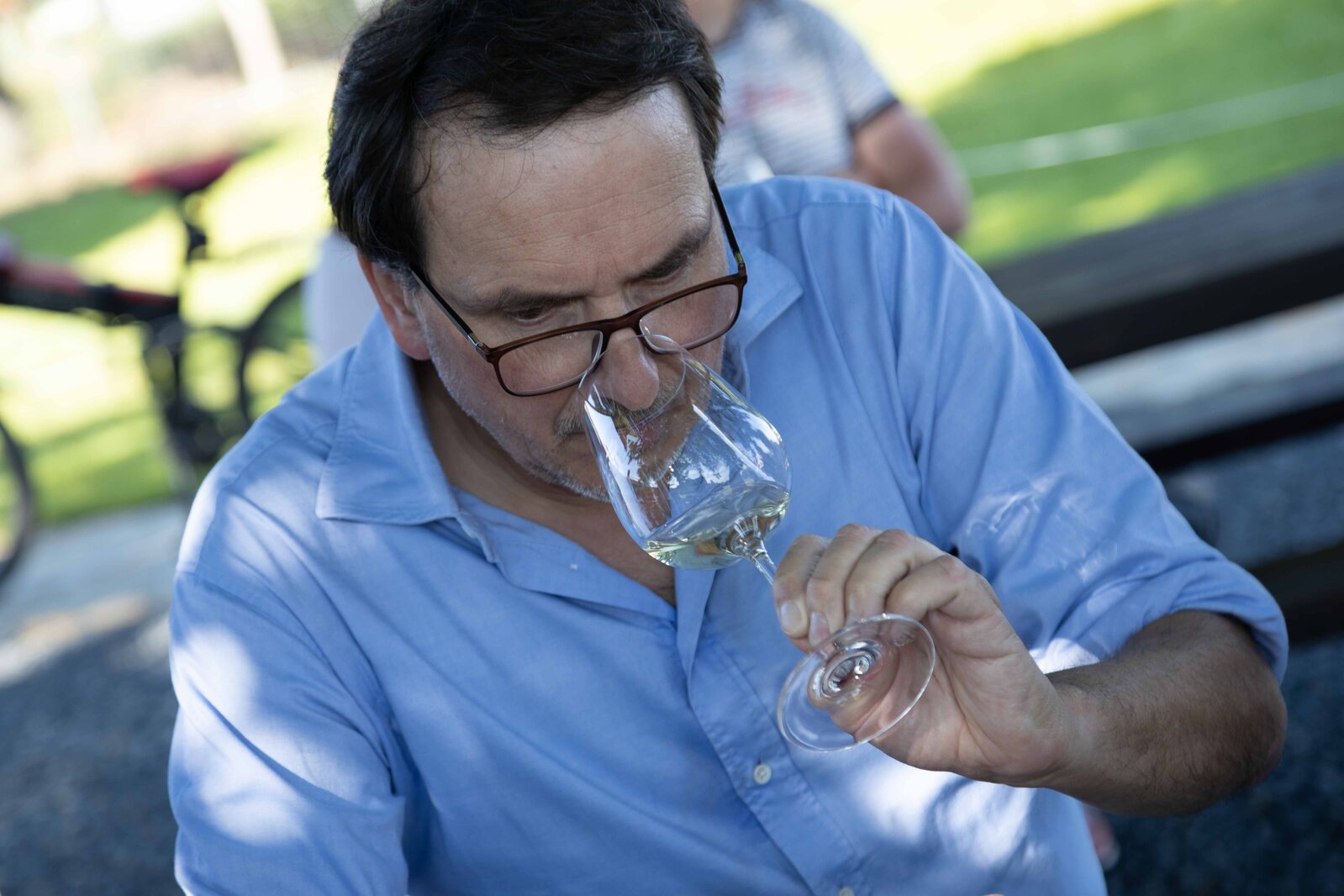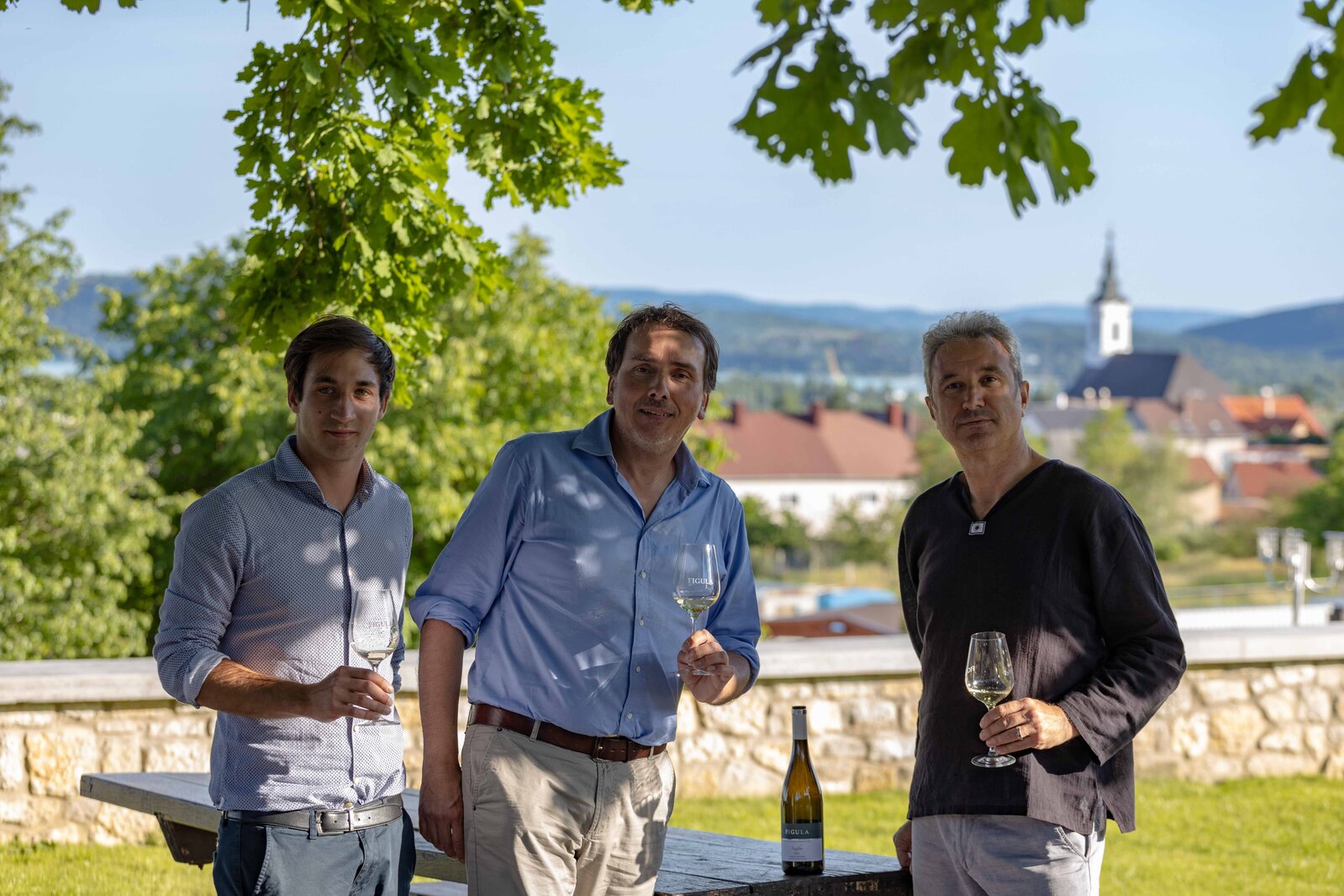Balaton Wine Competition: Hungarian Winemakers Need Not Envy Others
At the Balaton Wine Competition, along with the Hungarian judges, a three-member international jury, Italian winemakers also assessed the submitted samples. We spoke to one of the judges, Giampaolo Chiettini, after the competition about his feelings and Hungarian and Italian wine culture.

In your experience, how similar or different are the winemaking traditions of Italy and Hungary?
After the Second World War, Italy's agriculture-based economy was replaced by an industrial one. This industrialisation also applied to winemaking: previously, grapes were grown on large farms of up to 500 hectares. People lived on these farms - but they only rented, not owned the land.
In the 1950s and 60s, large vineyards were planted. Previously, farming was mixed, i.e., maize was sown on the same land as the vines. The attitude to wine changed: the everyday drink became a product to be marketed. In the sixties and seventies, in just a few years, production in Tuscany more than doubled. Still, the quality of the wine was poor, and this led to a collapse in prices and the bankruptcy of the vast vineyards.
Back in the 1960s, people consumed about 120 litres of wine a year, compared to 50-60 litres today. Italians like to drink wine daily but now they are looking for quality – less, but better wine.
In those years, winemakers had to realise that wine was not an assembly-line product but one that required ingenuity and vision. To mention just one name: the Antinori Winery started producing quality wines then. Their first step was to make international varieties such as cabernet sauvignon. Then, once they could deliver them as a high-quality beverage, their next step was to go back to traditional local grape varieties such as Sangiovese. Following Antinori's footsteps, winemakers who produced good quality wines appeared one after the other. In the regions, it is essential to have such role models who create tradition and a past to return to.
The history of Hungarian wine production is very similar to that of Italy. In the 1960s, during the socialist era, old traditions were thrown out the window. Here, too, the emphasis was on industry rather than agriculture. Production was managed in five-year plans, the same as in Italy. The socialist mentality was planning-driven.
What about today? What kind of approach should one follow in this globalised world? Should we think in terms of the world market, or should we focus on the needs of local consumers? Which direction should a wine region take?
I think the right way is to know your territory well, the soil, the climate, and how to produce wine. It's not a question of varieties; you can make good quality wine from merlot grapes.
Grape varieties are like musical instruments. Whether you play music well is not a question of whether you play the guitar or the piano but of how you play on those instruments. If you can't play the piano, you'll perform even the best songs poorly.
You also need role models. A musician will tell you that his roots go back to blues or pop music. That kind of connection to your predecessors is crucial. The Piedmontese winemaker, Angelo Gaja, once told me that we need both the past and the present. We must look at what the winemakers before us did, what they created thirty or forty years ago, and what others are doing in other parts of the world with the same grapes, grown on similar soils.
The present is also relevant; to meet with other winegrowers, to exchange experiences about varieties. If you're thinking about a particular type, it's worth looking at how it's being treated in areas where it is successful. For example, there are good cabernet sauvignons in Bordeaux or California, or Sangiovese, if you look at Tuscany. I think both recent and older vintages of the Welschriesling from Balaton are very high-quality wines, so it is worth taking a good look at those who work with this variety.
There is a good internal market for wines produced in Hungarian regions. You can sell them to Hungarians, which is very good because it creates wealth. But it also has drawbacks: it is too easy to meet market expectations, and that narrows your thinking. If you want to sell wine in New York or London, your product is compared to all the wines in the world. In those markets, you have a better chance to enrich your thinking and to understand better where you stand in terms of quality. But I don't think Hungarians have any reason to be envious of Austria or Italy. You have good and very different wine regions and good, talented winemakers, too. The first winemaker at one of the most famous Tuscan wineries, Ornellaia, in the late 1980s, was a Hungarian, Tibor Gál.

What was your impression of the Balaton Wine Competition?
I met some exciting varieties at the tasting, including traditional wines such as Kéknyelű, Kadarka and Welschriesling. These are great varieties. The best wines I tasted were two vintage Kéknyelűs from 2006. Their quality rivals the best Rhine Rieslings from Mosel or Wachau. Anyone who can produce wines of this quality understands the ins and outs of the wine business. If you ask me, the Balaton region offers good wines, some of them very good ones even, and these two Kéknyelűs were a real surprise for me. Of course, I know how great a fifteen-year-old white wine can be, but if you want to sell something like that, you must be either crazy or a great person.
Or both.
Probably both. :)
